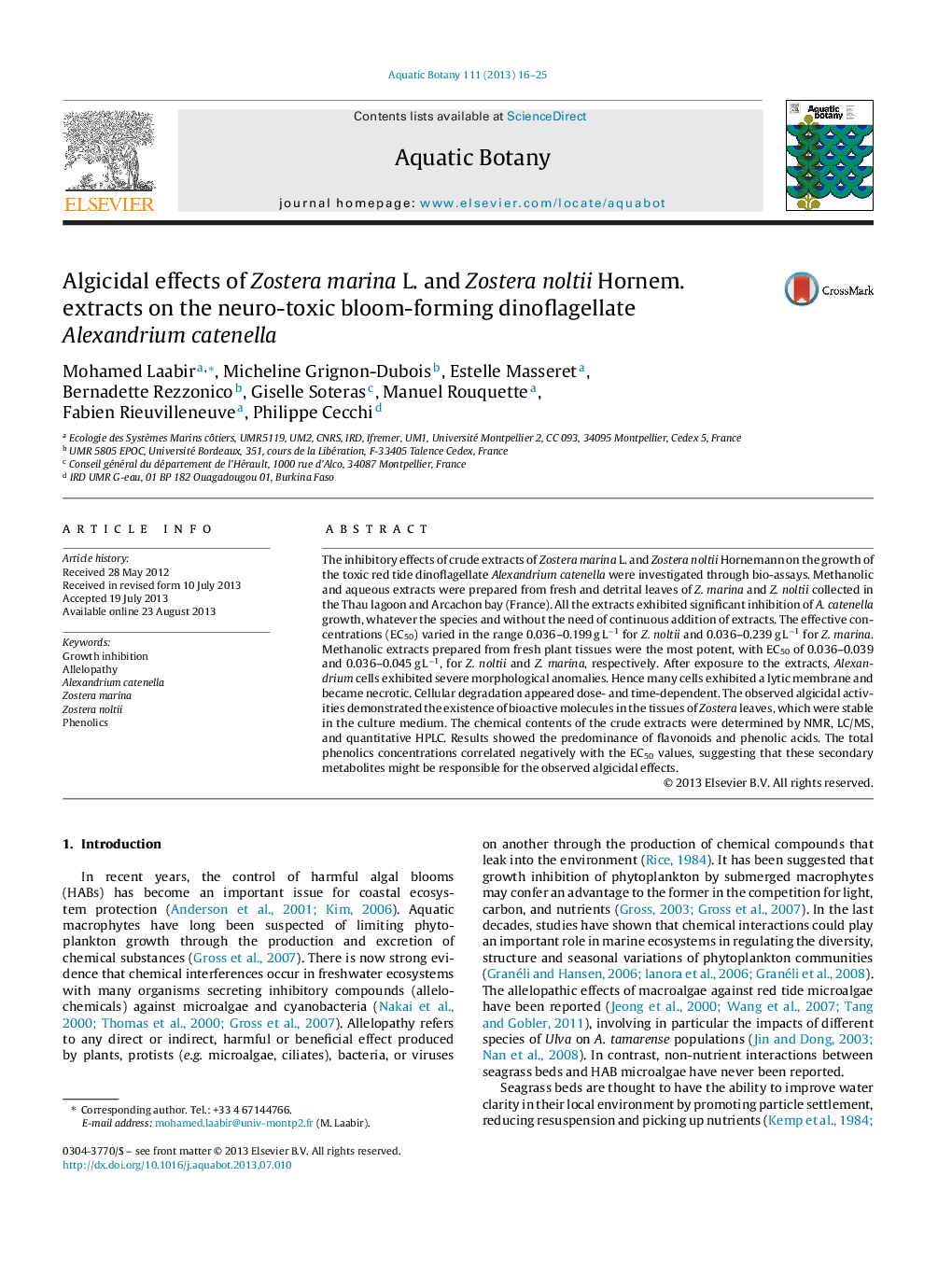| Article ID | Journal | Published Year | Pages | File Type |
|---|---|---|---|---|
| 4527841 | Aquatic Botany | 2013 | 10 Pages |
•We investigated the inhibitory effect of extracts from Zostera marina and Zostera noltii on the growth of Alexandrium catenella.•Methanolic and aqueous extracts were prepared from fresh and detrital leaves of Zostera species.•All the extracts exhibited dose-dependent significant inhibition of Alexandrium growth.•Phenolic concentrations in extracts were found to correlate negatively with EC50 values.•Phenolic compounds might be responsible of the observed algicidal effect.
The inhibitory effects of crude extracts of Zostera marina L. and Zostera noltii Hornemann on the growth of the toxic red tide dinoflagellate Alexandrium catenella were investigated through bio-assays. Methanolic and aqueous extracts were prepared from fresh and detrital leaves of Z. marina and Z. noltii collected in the Thau lagoon and Arcachon bay (France). All the extracts exhibited significant inhibition of A. catenella growth, whatever the species and without the need of continuous addition of extracts. The effective concentrations (EC50) varied in the range 0.036–0.199 g L−1 for Z. noltii and 0.036–0.239 g L−1 for Z. marina. Methanolic extracts prepared from fresh plant tissues were the most potent, with EC50 of 0.036–0.039 and 0.036–0.045 g L−1, for Z. noltii and Z. marina, respectively. After exposure to the extracts, Alexandrium cells exhibited severe morphological anomalies. Hence many cells exhibited a lytic membrane and became necrotic. Cellular degradation appeared dose- and time-dependent. The observed algicidal activities demonstrated the existence of bioactive molecules in the tissues of Zostera leaves, which were stable in the culture medium. The chemical contents of the crude extracts were determined by NMR, LC/MS, and quantitative HPLC. Results showed the predominance of flavonoids and phenolic acids. The total phenolics concentrations correlated negatively with the EC50 values, suggesting that these secondary metabolites might be responsible for the observed algicidal effects.
